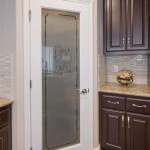How To Remove an Interior Door Handle With Lock and Keypad
Interior door handles with integrated locks and keypads offer convenient access control within a home or office. However, there may come a time when removing the handle becomes necessary, perhaps for replacement, repair, or upgrading to a new system. This process, while manageable with the right tools and approach, requires careful attention to detail to avoid damaging the door, lock mechanism, or surrounding hardware.
Before beginning, it's essential to gather the necessary tools. Typically, this includes a Phillips head screwdriver, a flathead screwdriver, and potentially a small Allen wrench or other specialized tool depending on the specific handle model. Consulting the manufacturer's instructions for the particular handle is highly recommended, as they may outline specific tool requirements or procedures.
The first step in removing the handle involves disabling the locking mechanism. This typically involves entering the correct code on the keypad or using a key to unlock the deadbolt. Once unlocked, the door should be opened slightly to facilitate access to the screws securing the handle to the door.
Most interior door handles are secured with two screws, one on the interior side and one on the exterior side. The interior side screw is usually located beneath a decorative cover plate. This cover plate can often be gently pried off using a flathead screwdriver. Care should be taken to avoid scratching the surrounding hardware or door surface. Once the cover plate is removed, the screw head will be exposed.
Next, the screw on the exterior side of the door needs to be located. This screw is often more readily visible and accessible. Using the appropriate screwdriver, carefully loosen and remove both screws, taking care not to lose them. Once both screws are removed, the two halves of the handle can be separated from the door.
With the two handle halves removed, the next step involves detaching the latch mechanism from the door edge. The latch mechanism is the component that extends into the doorjamb, allowing the door to close and latch securely. It's typically held in place by a faceplate secured with two screws. These screws should be located and removed using the appropriate screwdriver.
Once the screws are removed, the latch mechanism and faceplate can be carefully pulled out of the door edge. At this point, the entire door handle assembly, including the lock and keypad components, should be completely detached from the door.
For handles with integrated keypads, there may be wiring connecting the keypad to the lock mechanism or to a power source. If wiring is present, carefully disconnect it, noting the location and configuration of the wires for reinstallation or replacement. Some systems may use connectors that can be easily detached, while others may require unscrewing wire terminals.
If the handle is being replaced, the new handle should be installed by following the manufacturer’s instructions. These instructions will typically outline the reverse of the removal process, beginning with installing the latch mechanism and faceplate, followed by attaching the handle halves and securing them with screws. Finally, any wiring for the keypad should be reconnected, ensuring correct polarity and secure connections.
If the handle is being repaired, the specific repair procedures will depend on the nature of the problem. Consulting the manufacturer's documentation or contacting a qualified locksmith may be necessary for complex repairs. Once the repair is complete, the handle can be reinstalled using the reverse of the removal process.
When reinstalling the handle, ensuring proper alignment of all components is crucial for smooth operation. The latch bolt should extend freely into the strike plate on the doorjamb, and the handle should operate smoothly without binding or resistance. Testing the lock and keypad functionality after reinstallation is essential to confirm correct operation.
Different handle models may have slight variations in their design and removal procedures. Therefore, referring to the manufacturer's instructions for the specific handle model is always the recommended best practice. This ensures the correct tools are used, the proper procedures are followed, and the handle and lock mechanism are not damaged during the removal process.
Taking accurate photographs throughout the removal process can be immensely helpful, especially when dealing with complex mechanisms or wiring. These photographs can serve as a valuable reference during reinstallation, ensuring all components are returned to their correct positions and connections are made properly.
If any uncertainty arises during the removal process, consulting a qualified locksmith or hardware professional is recommended. They possess the expertise and experience to handle complex situations and offer guidance, preventing potential damage to the door, handle, or locking mechanism. Their knowledge can also be invaluable in troubleshooting any issues encountered during the removal or reinstallation process.

How To Change The Handing Of Your Schlage Door Lever

Schlage Commercial Handle Removal

Keypad Lock Installation Keyless Entry

Keypad Lock Installation Keyless Entry

How To Change A Door Lock Simple Decorating Tips

How To Change A Battery In Schlage Keypad Deadbolt Lock

How To Change A Door Lock In 7 Steps Replacing Vs Rekeying

Simple Ways To Replace A Door Handle 11 Steps With Pictures

How To Remove A Door Lock At Home Great Valley Malvern

6 Things To Know Before You Install A Keypad Door Lock
Related Posts








